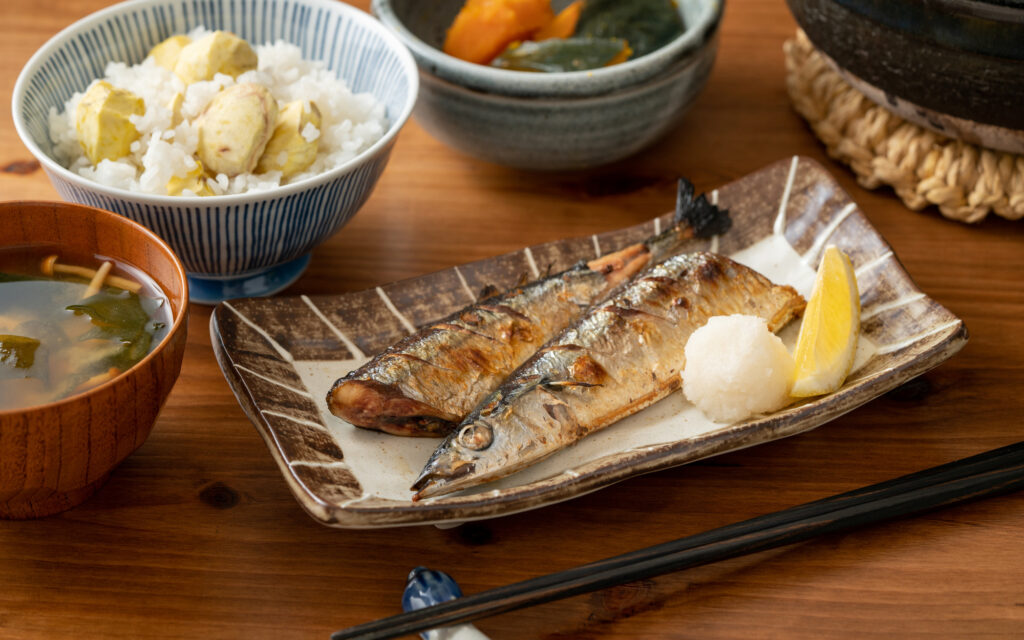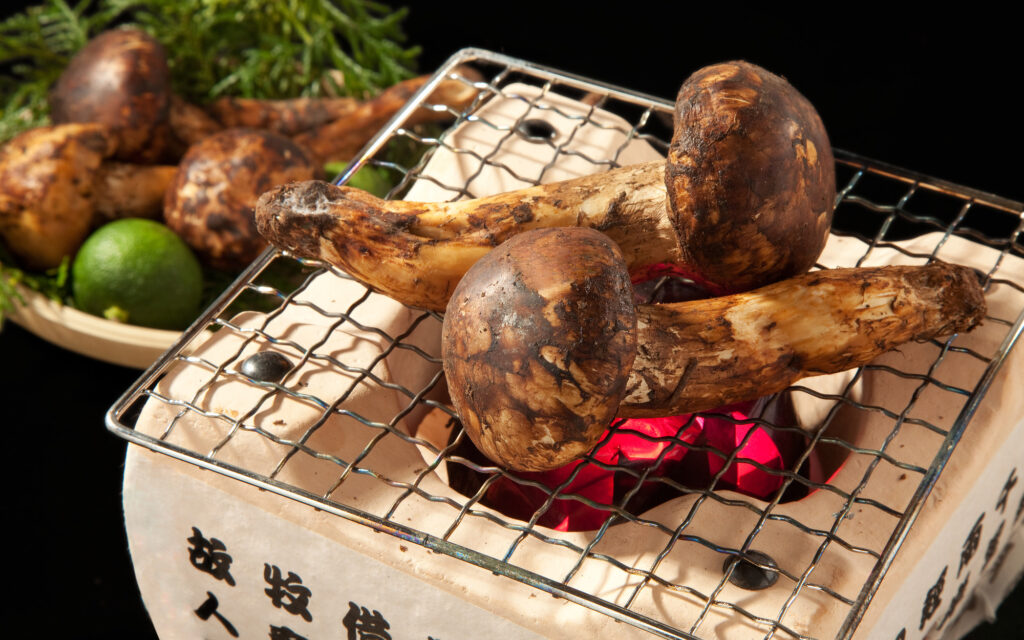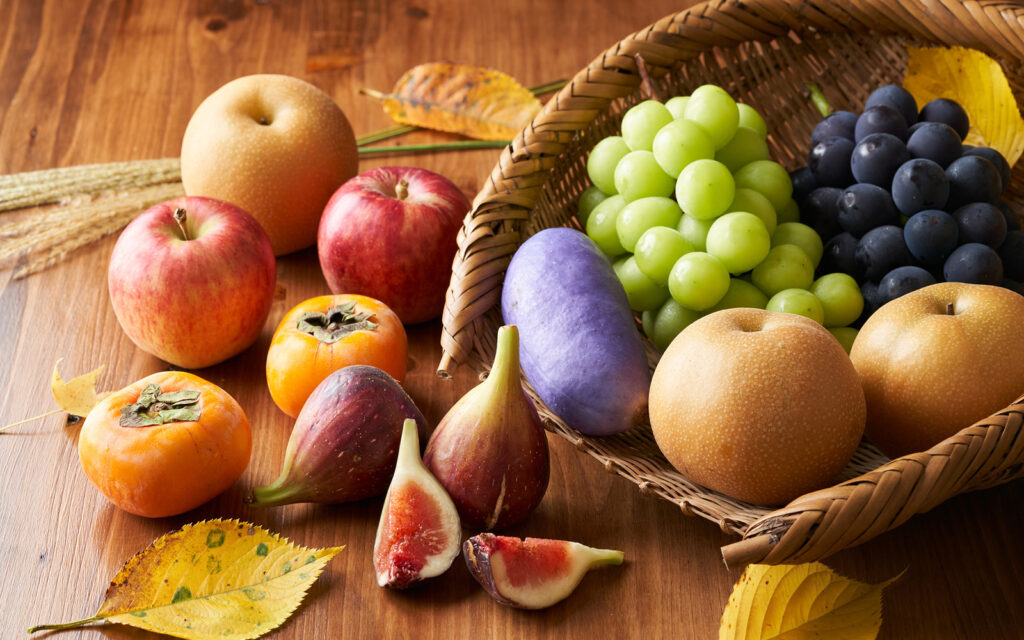5 Autumn Foods You Need to Try in Japan


Autumn in Japan is a feast for the senses and undeniably one of the best times to visit the country. The crisp air, breathtaking fall foliage, and the aroma of seasonal street foods like roasted chestnuts and sweet potatoes create a travel experience that’s as delicious as it is beautiful.
Autumn is one of the most exciting times to eat your way through the country. Whether you’re exploring busy city streets or quiet mountain towns, autumn brings a host of limited-time dishes that showcase regional ingredients at their peak. While shopping streets are a great place to try out seasonal specialties, the best hidden finds are often found off-the-grid, where access to a reliable data connection can be challenging.
That said, here are five iconic autumn foods to try in Japan—and a few tips on how to find them by staying connected with Nomad eSIM, an international travel eSIM that grants access to high-speed coverage over 200 destinations at affordable prices.
Autumn Foods in Japan
 Photo by: iStock/ kazoka30
Photo by: iStock/ kazoka30To make the most out of your trip, here are a few of the many seasonal flavors you should try.
Sweet Potato
 Photo by: iStock/ w-stock
Photo by: iStock/ w-stockYou’ll know it’s autumn when groceries have sweet potatoes roasting outside. Having entered the country through Okinawa in the 16th century, Japan produces over 1.5 million tons of sweet potatoes annually. Kagoshima and Ibaraki Prefectures are central hubs of sweet potato production. There are over 100 varieties of sweet potato that come in different colors, sweetness levels and textures. Come autumn, you’ll often see stalls offer yakiimo (grilled sweet potatoes), daigaku imo (deep-fried sweet potato with a sweet glaze) and other sweet potato-flavored desserts.
Tip: Popular sweet potato stands sell out early. Connect using Nomad eSIM and search “焼き芋” or “さつまいもスイーツ” on social media to find local recommendations.
Chestnuts
 Photo by: iStock/ MrKornFlakes
Photo by: iStock/ MrKornFlakesWaguri or Japanese chestnuts differ from those abroad due to their fluffy texture, natural sweetness and size. Chestnuts are cultivated across Japan from the mountains of Nagano Prefecture down to Kumamoto Prefecture. One of the most common autumnal desserts is the Japanese Mont Blanc, which uses a decadent chestnut paste.
Tip: Specialty Mont Blanc cafes often use same-day quotas or tickets. Nomad eSIM keeps you online to track available slots. Search for Mont Blanc specialty cafes using: 和栗 モンブラン
Pacific Saury
 Photo by: PIXTA/ shige hattori
Photo by: PIXTA/ shige hattoriSanma (Pacific Saury) directly translates to autumn knife fish. This fish is one of the season’s most-awaited delicacies. Full of healthy fat and DHA, it’s usually served grilled (sanma no shiyoaki) or raw and pairs perfectly with rice. It’s so popular that there are even festivals that just serve sanma.
Tip: Stalls selling grilled sanma often have long lines. With Nomad eSIM, stay updated on wait times and verify train/bus updates if you’re chasing pop-ups or local festivals.
Matsutake Mushroom
 Photo by: PIXTA/ ykokamoto
Photo by: PIXTA/ ykokamotoSavor the earthy, piney notes of Japan’s most premium mushroom, Matsutake. These rare and hard-to-cultivate mushrooms give truffles a run for their money. Try Matsutake gohan (matsutake cooked in rice), Matsutake with beef or on its own.
Tip: When in season, the best way to try Matsutake is to splurge on a traditional course meal (kaiseki). Use Nomad eSIM to make last-minute reservations.
Grapes, Persimmons and Pears
 Photo by: PIXTA/ shige hattori
Photo by: PIXTA/ shige hattoriAutumn brings an abundance of fruits. While most of these seasonal fruits originated overseas, decades of Japanese cultivation have transformed these imports into uniquely local varieties.
To pick the best ones, some supermarkets use stickers to signal the ripeness level of the fruit.
For something juicy, Japanese grapes are some of the sweetest you’ll ever taste. Popular Japanese varieties include: Shine Muscat, a bright green, seedless grape with a slightly sweet taste and Kyoho, a dark purple grape with candy-level sweetness.
Persimmons are Japan’s national fruit, mainly produced in Wakayama and Nara Prefectures. Popular for its rich, honey-like sweetness, persimmons are commonly eaten as is or as hoshigaki (dried persimmons).
Unlike pears elsewhere, Japanese pears differ in juiciness, sweetness level and crispness. Choose from three varieties of pears from Kosui, Hoksui and Nijisseiki. For a limited time this season, you’ll find pear-flavored products as jam, tarts and even in appetizers like salads.
Tip: Top up your Nomad eSIM and search these hashtags to find fruit parlors in your area: #シャインマスカットパフェ, #柿パフェ, #梨タルト.
Finding Hidden Autumn Gems
 Photo by: PIXTA/ MAPS
Photo by: PIXTA/ MAPSSome of the best seasonal foods aren’t found on tourist maps. Exploring local markets, rural towns, or lesser-known neighborhoods often leads to unforgettable meals—but language barriers and limited connectivity can be a challenge.
By investing in a reliable eSIM that keeps you connected no matter where you go, you can make every minute of your trip count. Check out these other tips to find hidden gems:
- Research Local Cuisine: Each prefecture has its own regional dish.
- Using Japanese words to search for restaurants or cafes: Use terms like #秋スイーツ (autumn sweets) or #秋限定 (fall exclusive) on Instagram or TikTok.
- Ask the Locals: Use a translation app to ask around for seasonal recommendations.
- Stay updated on seasonal menus: Some small cafes and restaurants tend only to announce their new flavors on their social media pages.
- Check Reviews on Tabelog or Google Maps: Choose places with a rating of 3.5 and above. The more Japanese (local) reviews, the better.
- Visit Depachika (department store basements): They usually have seasonal events with pop-ups from rural cafes or patisseries.
- Stop by Road Stations or Farmer’s Outlets: Type in 道の駅 (roadside station) and the prefecture you’re driving to. It doesn’t get any more local than that.
- Go early: Expect most stalls at markets like Kuranomon or Nishiki to open from 11 a.m. or 12 p.m. Arrive when they open so you get first dibs.
Stay Connected with Nomad eSIM
 Photo by: iStock/ primeimages
Photo by: iStock/ primeimagesNever miss out on a good meal whenever you travel with Nomad eSIM. Whether you’re sipping a glass of white wine in Yamanashi or indulging in chestnut pastries in Kagoshima, stay connected while you explore.
Say goodbye to physical SIM cards and hello to convenience as Nomad eSIM can be installed digitally before you depart and activates as soon as you arrive.
Need more data? You can easily top up directly through the Nomad eSIM app without switching SIMs or restarting your phone..
Check out Nomad eSIM to unlock the flavors of autumn and Nomad’s Data Calculator to choose the right data plan for your Japan adventures. Don’t forget to use our promo code NOMJAP25 for 22% off (valid until the end of the year).






